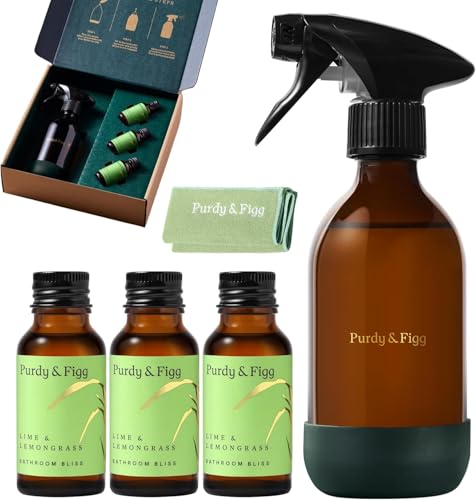



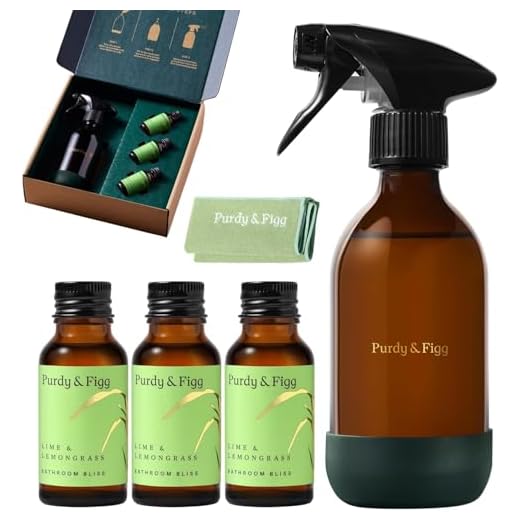
If you’ve noticed a build-up of limescale in your washing machine, it’s important to take action to remove it as soon as possible. Limescale can not only affect the performance of your washing machine, but it can also leave behind unsightly marks on your clothes. Fortunately, there are several effective methods you can use to remove limescale and keep your washing machine running smoothly.
One of the easiest and most cost-effective ways to remove limescale is to use white vinegar. Simply fill a cup with white vinegar and pour it into your washing machine’s detergent drawer. Run a hot wash cycle without any clothes to allow the vinegar to break down the limescale. Once the cycle is complete, wipe out any remaining limescale with a cloth or sponge.
Another method you can try is using citric acid. Citric acid is a natural cleaner that can effectively dissolve limescale. Mix a tablespoon of citric acid with a cup of warm water and pour the solution into your machine’s detergent drawer. Run a hot wash cycle without any clothes, and the citric acid will work to break down the limescale. After the cycle is complete, wipe out any remaining limescale with a cloth or sponge.
If you prefer a more traditional approach, you can also use a descaling product specifically designed for washing machines. These products are readily available at most supermarkets and contain chemicals that can effectively dissolve limescale. Simply follow the instructions on the product and run a hot wash cycle without any clothes. Be sure to rinse the machine thoroughly afterwards to remove any residual chemicals.
In conclusion, limescale can be a common problem in washing machines, but with the right methods, it can be easily removed. Whether you choose to use white vinegar, citric acid, or a descaling product, regular maintenance is key to keeping your washing machine limescale-free. By taking the time to remove limescale, you can ensure your washing machine continues to deliver clean and fresh laundry.
Why Limescale Forms in Washing Machines
Limescale is a common problem that can affect the performance and efficiency of your washing machine. It is caused by minerals, such as calcium and magnesium, that are naturally present in hard water. When hard water is heated, these minerals are deposited on the heating elements and inside the drum of the washing machine, forming a crusty, chalky substance known as limescale.
Limescale can cause a number of issues in your washing machine. Firstly, it can reduce the efficiency of the heating elements, causing your machine to take longer to heat up and use more energy. This can result in higher electricity bills and decreased overall performance.
In addition, limescale can also lead to poor washing results. The buildup of limescale can interfere with the detergent’s ability to foam, reducing its effectiveness in removing stains and odours from your clothes. This can result in clothes that are not as clean or fresh smelling as they should be.
Furthermore, limescale can also cause damage to the internal components of your washing machine over time. The buildup of limescale can lead to clogged pipes and valves, reducing water flow and increasing the risk of blockages. This can put strain on the machine’s motor and pump, leading to increased wear and tear and potentially costly repairs.
Hard water is the main culprit for limescale formation in washing machines. Regions with high levels of mineral content in their water supply are more prone to limescale buildup. Consequently, if you live in an area with hard water, it is important to be proactive in preventing and removing limescale to keep your washing machine running efficiently.
The Impacts of Limescale Buildup
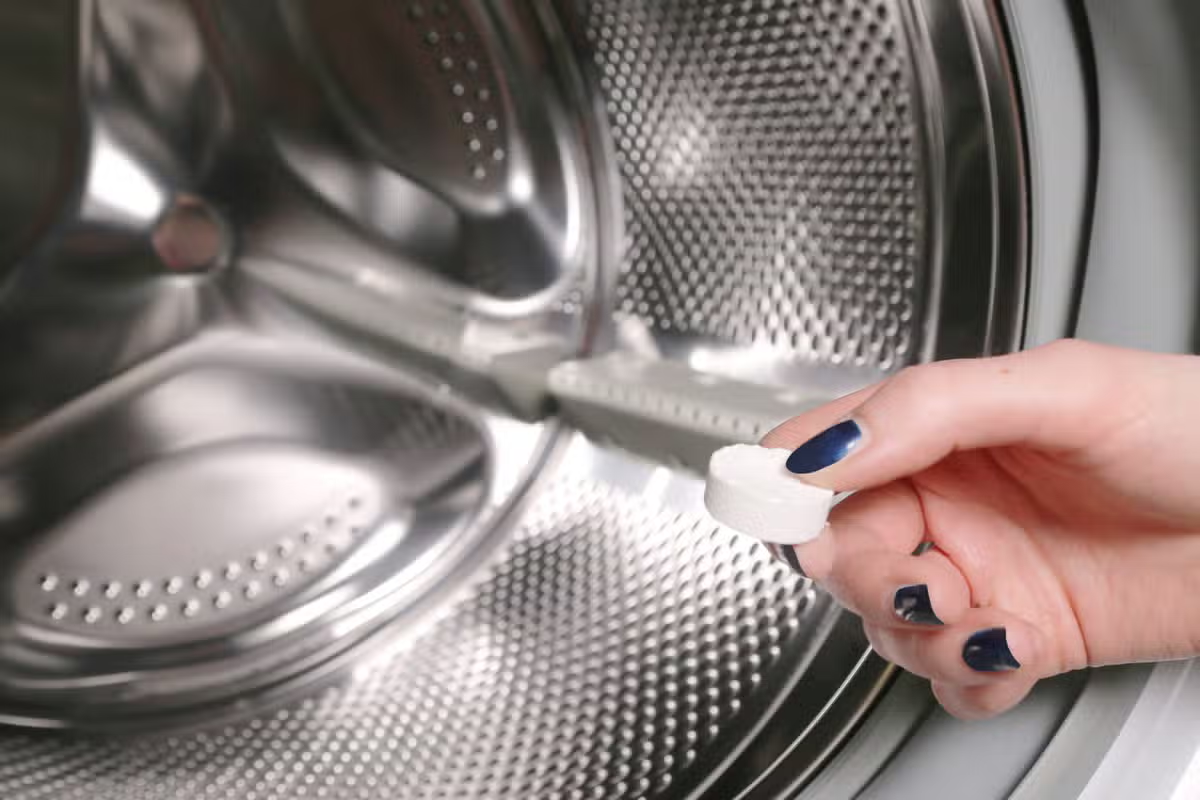
Limescale buildup can have several negative impacts on your washing machine’s performance and longevity. It is important to understand these impacts in order to effectively prevent and remove limescale.
1. Reduced Efficiency
When limescale builds up in your washing machine, it can affect its efficiency in several ways:
- Increased Energy Consumption: Limescale deposits create a layer of insulation, preventing the heating element from efficiently heating up the water. As a result, your washing machine may consume more energy to heat the water to the desired temperature.
- Prolonged Washing Time: Limescale can interfere with the water flow and reduce the effectiveness of detergent. This can lead to longer washing cycles as the machine tries to compensate for the reduced cleaning power.
- Reduced Water Pressure: Limescale buildup in the water inlet valve can cause decreased water pressure, affecting the overall performance of your washing machine.
2. Damage to Components
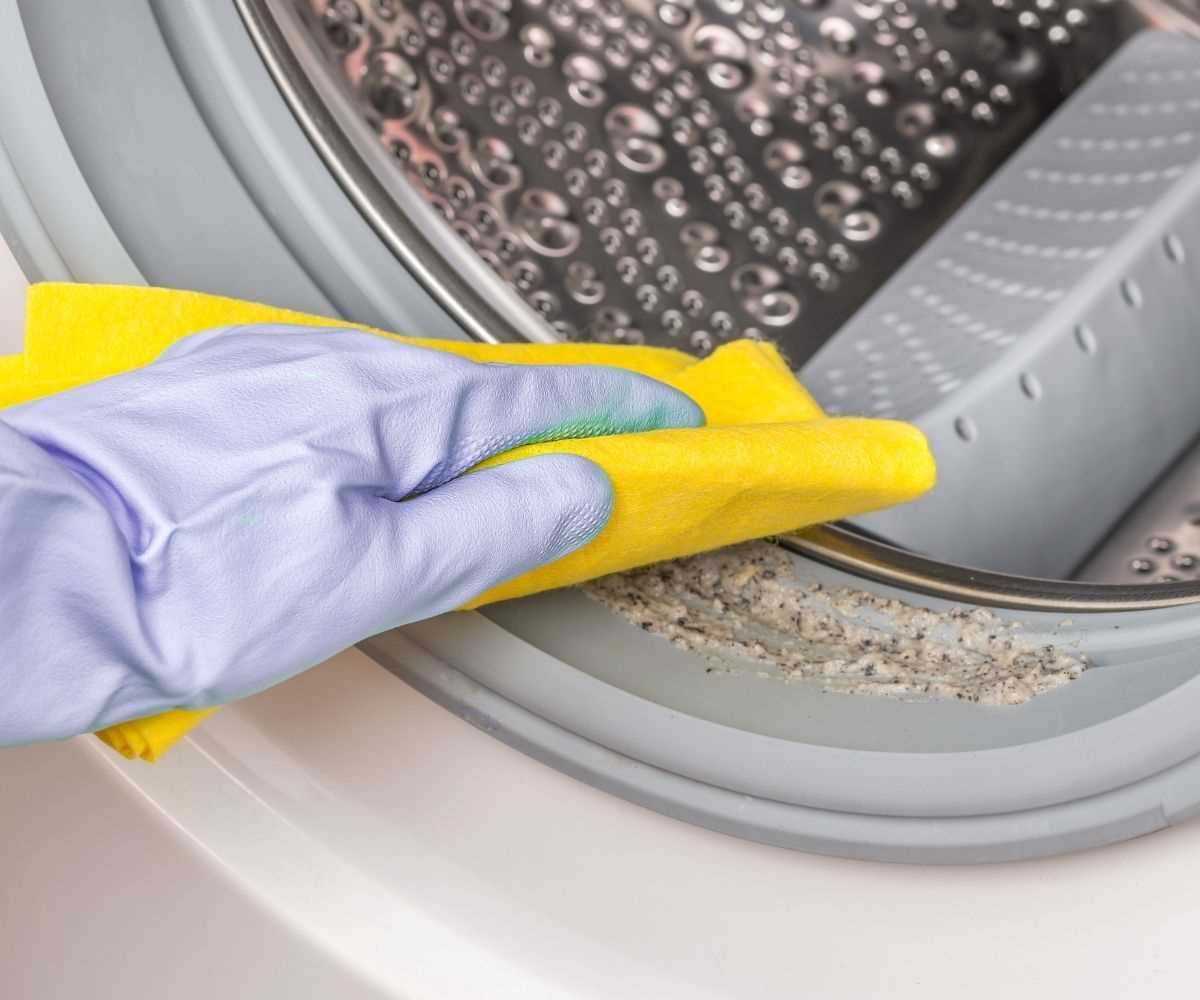
Limescale buildup can also cause damage to various components of your washing machine:
- Heating Element: The heating element can be particularly vulnerable to limescale buildup. It can become coated with limescale, which reduces its ability to heat the water efficiently and can eventually lead to its failure.
- Pipes and Hoses: Limescale can accumulate inside the pipes and hoses, causing blockages and reducing water flow. This can put additional strain on the washing machine’s pump and other components, potentially leading to their failure.
- Drum and Agitator: Limescale buildup on the drum and agitator can cause them to become less efficient, resulting in decreased washing performance and potential damage to the clothes being washed.
3. Increased Maintenance and Repair Costs
If limescale is left untreated, it can lead to more frequent breakdowns and costly repairs. Accumulated limescale can increase wear and tear on various parts of the washing machine, leading to malfunctions or complete failure of certain components.
Therefore, it is essential to regularly clean and descale your washing machine to prevent limescale buildup and avoid these negative impacts.
Preventing Limescale Buildup in Washing Machines
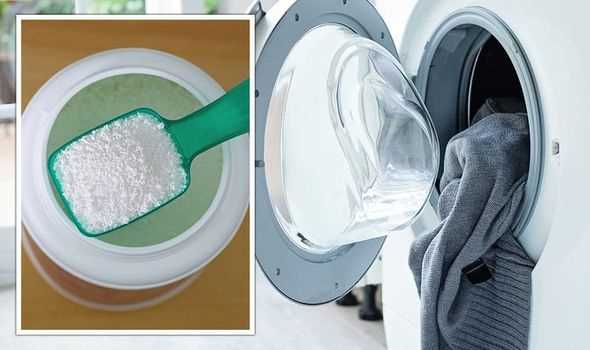
Limescale buildup in washing machines can be a common problem, but there are several steps you can take to prevent it from occurring. By following these preventive measures, you can ensure that your washing machine operates efficiently and lasts longer.
1. Use a Water Softener
Installing a water softener can help prevent limescale buildup in your washing machine. Water softeners work by removing minerals, such as calcium and magnesium, which are responsible for the formation of limescale. By using soft water, you can minimize the risk of limescale buildup and prolong the lifespan of your washing machine.
2. Use the Correct Amount of Detergent
Using too much detergent can contribute to limescale buildup in your washing machine. Excess detergent can cause soap scum and minerals to accumulate on the inner surfaces of the machine. Follow the manufacturer’s instructions for the recommended amount of detergent to use for each load of laundry.
3. Clean the Washing Machine Regularly
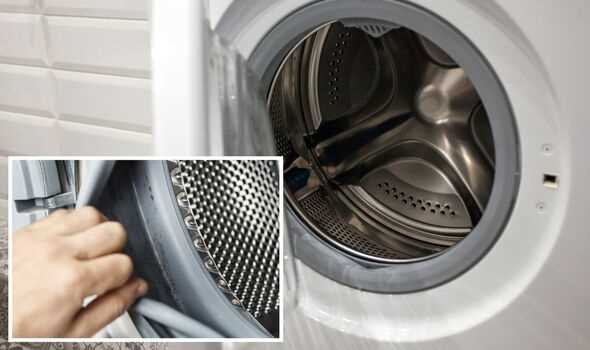
Regularly cleaning your washing machine can help prevent limescale buildup. There are several ways to clean your machine, such as running a hot water cycle with vinegar or using a descaling agent specifically designed for washing machines. Cleaning the detergent drawer and the rubber seal around the door is also important to remove any residue or buildup.
4. Remove Laundry Promptly
Leaving damp laundry in the washing machine for an extended period of time can promote limescale formation. Make sure to remove your clothes promptly after the washing cycle is complete. Leaving the door open between uses can also help to prevent moisture buildup and minimize limescale formation.
5. Avoid High Temperature Washes
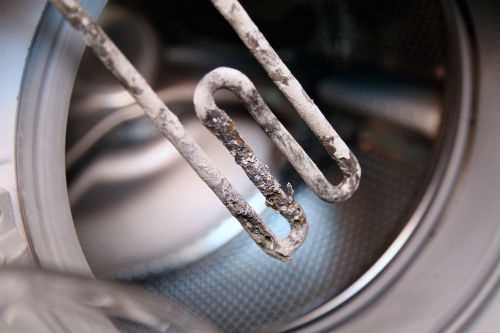
Using hot water for every wash can contribute to limescale buildup over time. Try using lower temperature settings when possible, as this can reduce the amount of mineral deposits in your washing machine. Additionally, washing clothes at lower temperatures can save energy and money on your utility bills.
- Install a water softener
- Use the correct amount of detergent
- Clean the washing machine regularly
- Remove laundry promptly
- Avoid high-temperature washes
By following these preventive measures, you can effectively reduce the risk of limescale buildup in your washing machine. Taking care of your machine will not only keep it in good condition, but it will also ensure that your clothes are cleaned effectively.
Using White Vinegar
White vinegar is a natural and effective solution for removing limescale from your washing machine. Here’s how you can use it:
- Preparation: Before you start, make sure your washing machine is empty and unplugged.
- Mixing the solution: In a measuring cup, mix equal parts white vinegar and water. The amount you’ll need will depend on the size of your washing machine, but a couple of cups should be sufficient.
- Applying the solution: Pour the vinegar and water solution into the detergent compartment of your washing machine. If you don’t have a detergent compartment, you can pour it directly into the drum.
- Running a cycle: Start a hot water cycle with the highest water level setting. This will allow the vinegar solution to distribute evenly and reach all the nooks and crannies of your washing machine.
- Pause and soak: Once the cycle has started, pause the washing machine and allow it to soak for about an hour. This will give the vinegar solution time to break down the limescale deposits.
- Completing the cycle: After the soaking period, let the washing machine complete the cycle.
Note: It might be a good idea to run an additional rinse cycle with plain water to ensure that all the vinegar residue is removed.
You can repeat this process once a month or as needed to prevent limescale buildup and keep your washing machine running smoothly.
Lemon Juice as a Natural Cleaner
When it comes to effectively removing limescale from your washing machine, lemon juice is a natural cleaner that can do wonders. Not only does it have a pleasant scent, but it also contains citric acid which can dissolve tough mineral deposits.
To use lemon juice as a natural cleaner for your washing machine, follow these steps:
- Gather your supplies: You will need fresh lemons or lemon juice, a small bowl, a sponge or cloth, and water.
- Prepare the lemon juice solution: Squeeze the juice of several lemons into a small bowl. If you don’t have fresh lemons, you can use bottled lemon juice.
- Apply the lemon juice solution: Dip a sponge or cloth into the lemon juice solution and apply it to the areas with limescale buildup in your washing machine. Make sure to cover all the affected areas.
- Let it sit: Allow the lemon juice solution to sit for about 15-30 minutes. This will give the citric acid enough time to break down the limescale deposits.
- Scrub the limescale: After the lemon juice solution has had time to work, use a sponge or cloth to scrub the limescale away. Apply some pressure to remove any stubborn deposits.
- Rinse thoroughly: Once you have scrubbed away the limescale, rinse the areas with clean water. This will remove any remaining lemon juice and limescale residue.
Using lemon juice as a natural cleaner not only removes limescale effectively but also leaves your washing machine smelling fresh. It is a safe and eco-friendly alternative to chemical cleaners. However, it’s important to note that lemon juice may not be suitable for all types of washing machines, especially those with delicate surfaces or finishes. Always check the manufacturer’s instructions before using any cleaning products on your washing machine.
Cleaning with Baking Soda
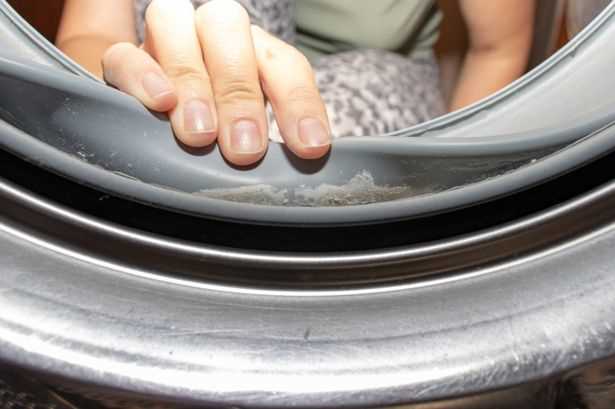
Baking soda, also known as sodium bicarbonate, is a cheap and versatile household cleaning agent that can effectively remove limescale from your washing machine. Here are some methods to clean your washing machine using baking soda:
1. Baking Soda Paste
Create a paste by mixing baking soda with a small amount of water until it forms a thick consistency. Apply the paste directly to the areas affected by limescale, such as the drum or detergent drawer.
Leave the paste on for approximately 15-20 minutes to allow it to work its magic. Then, using a clean cloth or sponge, scrub the affected areas gently. Rinse thoroughly with water to remove any residue.
2. Baking Soda Rinse
Add 1 cup of baking soda to the detergent drawer of your washing machine. Run a wash cycle on the hottest setting available, using an empty drum. The baking soda will help break down and dissolve any limescale buildup in the machine.
Once the cycle is complete, wipe down the drum and any other affected areas with a clean cloth or sponge. Repeat this process as necessary, especially if the limescale is stubborn and not easily removed.
3. Baking Soda and Vinegar Combination
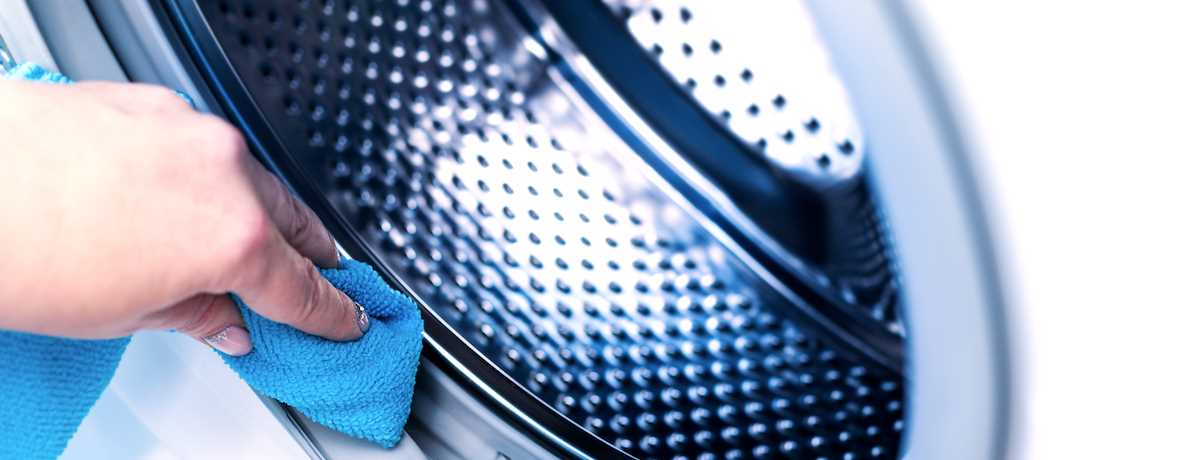
You can also combine baking soda with vinegar to create a powerful cleaning solution for your washing machine. First, sprinkle 1 cup of baking soda into the drum.
Next, pour 2 cups of vinegar into the detergent drawer or directly into the drum. The reaction between the baking soda and vinegar will help dissolve limescale, dirt, and grime.
Run a wash cycle on the hottest setting, using an empty drum. Once the cycle is complete, wipe down the drum and any other affected areas with a clean cloth or sponge.
4. Regular Maintenance
To prevent limescale buildup in your washing machine, it’s essential to perform regular maintenance. Adding 1/2 cup of baking soda to each wash cycle can help keep limescale and odours at bay.
Additionally, wipe down the drum and detergent drawer with a clean cloth or sponge after each use to remove any residue or limescale buildup.
Remember to always consult your washing machine’s manufacturer manual for any specific cleaning instructions or recommendations.
Please note that these methods are intended for top-loading and front-loading washing machines. Always test a small, inconspicuous area first before applying baking soda to the entire machine to avoid any potential damage.
Citric Acid for Effective Limescale Removal
If you’re looking for an effective and affordable way to remove limescale build-up in your washing machine, citric acid can be a great solution. Citric acid is a natural acid that is found in citrus fruits such as lemons and oranges, and it has a wide range of uses including cleaning and descaling appliances.
Why Use Citric Acid?
Citric acid is a popular choice for limescale removal because it is safe to use and does not contain any harsh chemicals that may damage your washing machine. It is also an environmentally friendly option compared to chemical-based descaling products.
Another advantage of using citric acid is that it is readily available and affordable. You can easily find citric acid in the baking aisle of your local grocery store or buy it online. It comes in powder form and is usually sold in small packets or bulk packages.
How to Use Citric Acid to Remove Limescale
Using citric acid to remove limescale from your washing machine is a simple process. Here’s a step-by-step guide to help you through the process:
- Start by making sure your washing machine is empty and turned off.
- Dissolve a packet of citric acid powder in a bowl of warm water. The amount of citric acid you use will depend on the severity of the limescale build-up. As a general guideline, 50-100 grams of citric acid per liter of water should be sufficient.
- Pour the citric acid solution into the detergent compartment of your washing machine.
- Run a hot wash cycle without any laundry. Select the longest and hottest cycle available on your machine.
- Once the cycle is complete, open the door and let the machine air out for a few hours.
- If there is still some limescale residue remaining, repeat the process with a higher concentration of citric acid.
- Finally, run a rinse cycle with clean water to remove any remaining citric acid from the machine.
Preventive Measures
To prevent limescale build-up in your washing machine in the future, there are a few simple measures you can take:
- Use a water softening device or install a water softener if you have hard water.
- Regularly clean the detergent drawer and filter of your washing machine.
- Avoid overusing detergent as it can contribute to limescale build-up.
- Run a hot wash cycle with citric acid every couple of months to keep limescale at bay.
By following these preventive measures and using citric acid as a descaling agent, you can keep your washing machine running efficiently and prolong its lifespan. Say goodbye to limescale and hello to cleaner, fresher laundry!
FAQ
What is limescale and how does it form in washing machines?
Limescale is a hard, chalky substance that forms when mineral deposits in water are left behind on surfaces. In washing machines, limescale typically forms on heating elements, the inside of the drum, and valves. This buildup can affect the performance of the machine and lead to blockages.
What are some signs that my washing machine may have limescale buildup?
Signs of limescale buildup in a washing machine include a decrease in cleaning efficiency, clothes not properly rinsed, a foul odor, and the presence of white or gray flakes on clothes after washing. Additionally, the machine may make unusual noises or take longer to complete a cycle.
What are some effective methods to remove limescale from a washing machine?
There are several effective methods to remove limescale from a washing machine. One method is to run a cycle with a solution of equal parts water and vinegar. Another method is to use a descaling product specifically designed for washing machines. Additionally, regularly cleaning the detergent drawer and using a water softener can help prevent limescale buildup.
Are there any natural remedies for removing limescale from a washing machine?
Yes, there are natural remedies for removing limescale from a washing machine. One option is to mix baking soda with water to form a paste, then apply it to the affected areas and scrub with a soft brush. Lemon juice can also be effective in breaking down limescale. Another natural method is to soak the affected parts in white vinegar overnight.












